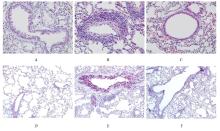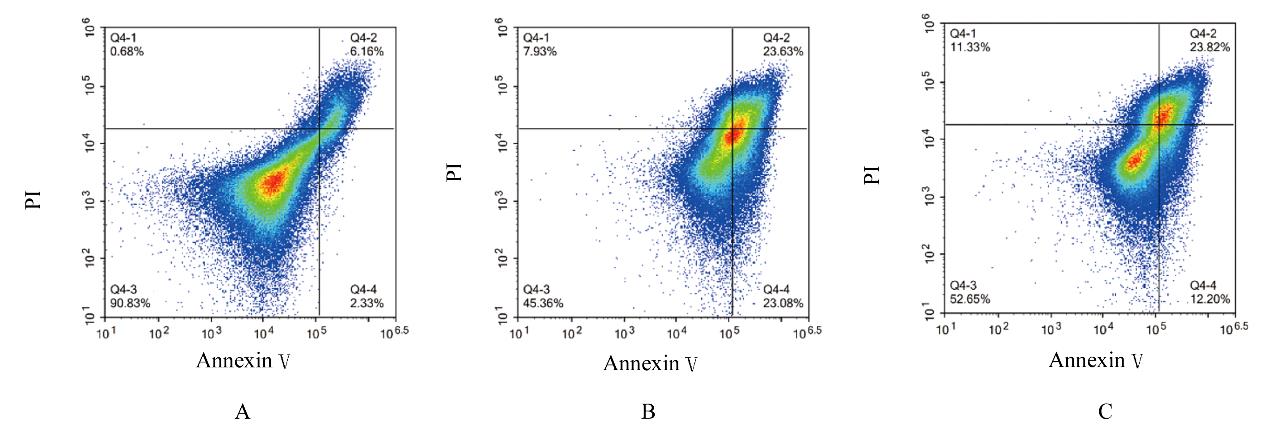| 1 |
DOLL R, HILL A B. Lung cancer and other causes of death in relation to smoking[J]. BMJ, 1956, 2(5001): 1071-1081.
|
| 2 |
FENG H, YIN Y, REN Y, et al. Effect of CSE on M1/M2 polarization in alveolar and peritoneal macrophages at different concentrations and exposure in vitro [J]. In Vitro Cell Dev Biol Anim, 2020, 56(2): 154-164.
|
| 3 |
ZHANG L, HU K, SHAO T, et al. Recent developments on PET radiotracers for TSPO and their applications in neuroimaging[J]. Acta Pharm Sin B, 2021, 11(2): 373-393.
|
| 4 |
ZHOU D, JI L, CHEN Y. TSPO Modulates IL-4-induced microglia/macrophage M2 polarization via PPAR-gamma pathway[J]. J Mol Neurosci, 2020, 70(4): 542-549.
|
| 5 |
NAKAMURA Y, ROMBERGER D J, TATE L, et al. Cigarette smoke inhibits lung fibroblast proliferation and chemotaxis.[J]. Am J Respir Crit Care Med, 1995, 151(5): 1497-1503.
|
| 6 |
THOMSON N C, POLOSA R, SIN D D. Cigarette smoking and asthma[J]. J Allergy Clin Immunol Pract, 2022, 10(11): 2783-2797.
|
| 7 |
MÜNZEL T, HAHAD O, KUNTIC M, et al. Effects of tobacco cigarettes, e-cigarettes, and waterpipe smoking on endothelial function and clinical outcomes[J]. Eur Heart J, 2020, 41(41): 4057-4070.
|
| 8 |
BRAESTRUP C, SQUIRES R F. Specific benzodiazepine receptors in rat brain characterized by high-affinity (3H)diazepam binding[J]. Proc Natl Acad Sci USA, 1977, 74(9): 3805-3809.
|
| 9 |
THACKERAY J T, HUPE H C, WANG Y, et al. Myocardial inflammation predicts remodeling and neuroinflammation after myocardial infarction[J]. J Am Coll Cardiol, 2018, 71(3): 263-275.
|
| 10 |
ZHANG H, WANG H, GAO F, et al. TSPO deficiency accelerates amyloid pathology and neuroinflammation by impairing microglial phagocytosis[J]. Neurobiol Aging, 2021, 106: 292-303.
|
| 11 |
GOGGI J L, CLASER C, HARTIMATH S V, et al. PET imaging of translocator protein as a marker of malaria-associated lung inflammation[J]. Infect Immun, 2021, 89(10): e0002421.
|
| 12 |
MARTINEZ-ORENGO N, TAHMAZIAN S, LAI J, et al. Assessing organ-level immunoreactivity in a rat model of sepsis using TSPO PET imaging[J]. Front Immunol, 2022, 13: 1010263.
|
| 13 |
MAGES K, GRASSMANN F, JÄGLE H, et al. The agonistic TSPO ligand XBD173 attenuates the glial response thereby protecting inner retinal neurons in a murine model of retinal ischemia[J]. J Neuroinflammat, 2019, 16(1): 43.
|
| 14 |
RASHID K, VERHOYEN M, TAIWO M, et al. Translocator protein (18 kDa) (TSPO) ligands activate Nrf2 signaling and attenuate inflammatory responses and oxidative stress in human retinal pigment epithelial cells[J].Biochem Biophys Res Commun, 2020,528(2): 261-268.
|
| 15 |
SHAPOURI MOGHADDAM A, MOHAMMADIAN S, VAZINI H, et al. Macrophage plasticity, polarization, and function in health and disease[J]. J Cell Physiol, 2018, 233(9): 6425-6440.
|
| 16 |
ROSS E A, DEVITT A, JOHNSON J R. Macrophages: the good, the bad, and the gluttony[J]. Front Immunol, 2021, 12: 708186.
|
| 17 |
ZHOU J, ZHANG X, PENG J, et al. TSPO ligand Ro5-4864 modulates microglia/macrophages polarization after subarachnoid hemorrhage in mice[J]. Neurosci Lett, 2020, 729: 134977.
|
| 18 |
MONGA S, DENORA N, LAQUINTANA V, et al. The protective effect of the TSPO ligands 2,4-Di-Cl-MGV-1, CB86, and CB204 against LPS-induced M1 pro-inflammatory activation of microglia[J]. Brain Behav Immun Health, 2020, 5: 100083.
|
| 19 |
RENDRA E, RIABOV V, MOSSEL D M, et al. Reactive oxygen species (ROS) in macrophage activation and function in diabetes[J]. Immunobiology, 2019, 224(2): 242-253.
|
| 20 |
ZHAO R Z, JIANG S, ZHANG L, et al. Mitochondrial electron transport chain, ROS generation and uncoupling (Review)[J]. Int J Mol Med, 2019, 44(1): 3-15.
|
| 21 |
WOLF A, HERB M, SCHRAMM M, et al. The TSPO-NOX1 axis controls phagocyte-triggered pathological angiogenesis in the eye[J]. Nat Commun, 2020, 11(1): 2709.
|
| 22 |
符蓉,徐忠伟,高宏生,等. 二氧化硅通过激活线粒体和死亡受体途径介导小鼠RAW264.7巨噬细胞凋亡和极化的机制研究 [J]. 武警后勤学院学报(医学版),2017, 26(10): 829-835.
|
| 23 |
LOTH M K, GUARIGLIA S R, RE D B, et al. A novel interaction of translocator protein 18 kDa (TSPO) with NADPH oxidase in microglia[J]. Mol Neurobiol, 2020, 57(11): 4467-4487.
|
| 24 |
SEN R, BALTIMORE D. Multiple nuclear factors interact with the immunoglobulin enhancer sequences[J]. Cell, 1986, 46(5): 705-716.
|
| 25 |
WHITESIDE S T, ISRAËL A. I kappa B proteins: structure, function and regulation[J]. Semin Cancer Biol, 1997, 8(2): 75-82.
|
| 26 |
CAPECE D, VERZELLA D, FLATI I, et al. NF-kappa B: blending metabolism, immunity, and inflammation[J].Trends Immunol,2022,43(9):757-775.
|
| 27 |
POZZO E D, TREMOLANTI C, COSTA B, et al. Microglial pro-inflammatory and anti-inflammatory phenotypes are modulated by translocator protein activation[J]. Int J Mol Sci, 2019, 20(18): 4467.
|
 ),Min WU(
),Min WU( )
)











